|
99. Nymphalis antiopa (Linnaeus, 1758) / Camberwell beauty / Nymphalidae – Nymphalinae
NL: rouwmantel / D: Trauermantel / F: morio
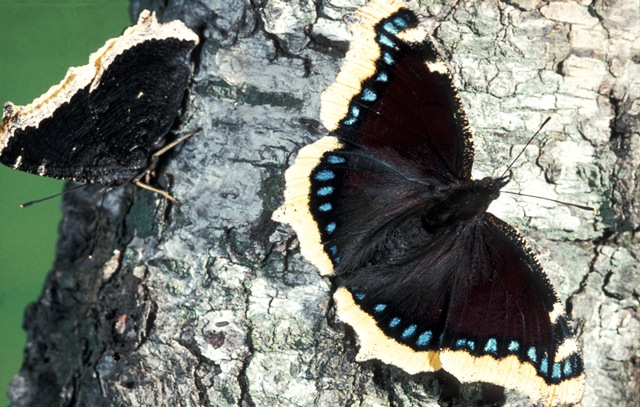 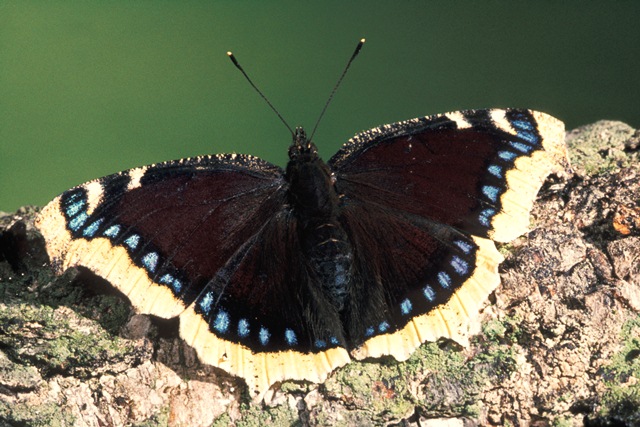 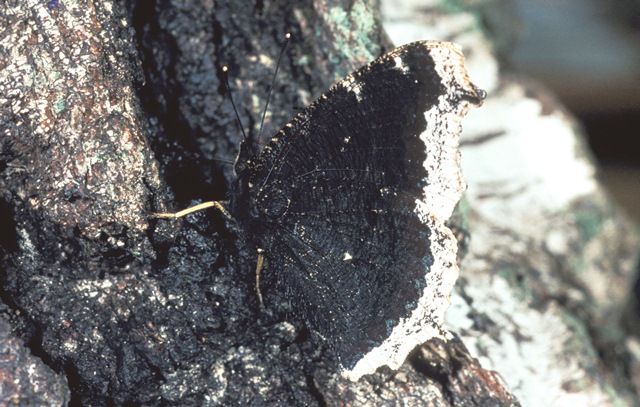
Photographs: Frits Bink ©.
Large, wing length 33 (30-35) mm. In the Benelux it occured frequently in river valleys in the Ardennes but nowadays it has become a rare observation.
It can be met anywhere in the countryside but the number of yearly sightings is low.
Butterfly is on the wing in the spring after overwintering from late-March until early-May and peaks mid-April. The second flight period is in summer when the offspring emerged from late-July until early-October and peaks early-August and again early-September.
The species is known from sub-continental to severe continental climates, amplitude 8 to 20. Required heat sum is 400°d and maximum tolerated 2000°d, corresponding climate windows 19 and 38 weeks.
The Camberwell beauty is named after its first reported sighting in Britain, near Camberwell in south-east London in 1748. The species occurs in England by immigration and notable influxes have occurred in 1846, 1872, 1947, 1976 and 1995. In 1996 some butterflies were recorded in early spring but the climate there is unsuitable to establish a population (Asher et al. 2001: 311).
In South-Europe this boreal species occurs also in river valleys in sub-Mediterranean climate if high mountains are nearby to provide suitable cooler overwintering sites.
Ecological characteristics
Behaviour over time
Overwintering: adult, hidden in a cave or hollow tree.
Reproduction: after overwintering the ovarian activity starts and about a month later oviposition is begun when the body contains 270 (245-300) eggs, potential reproduction the same.
Larval feeding periods: 6-7 weeks in the period from early-June until early-August.
Generations: one.
Spreading of risk: not observed.
Life cycle: egg about 19 days; larva 45 (32-50) days; pupa 17 (12-22) days.
Life span of adult: very long, 40-47 weeks.
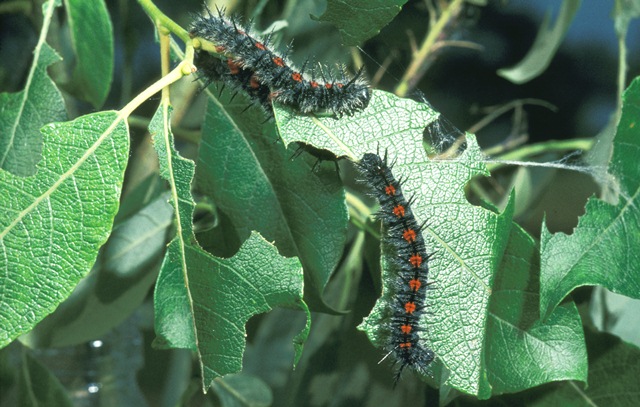 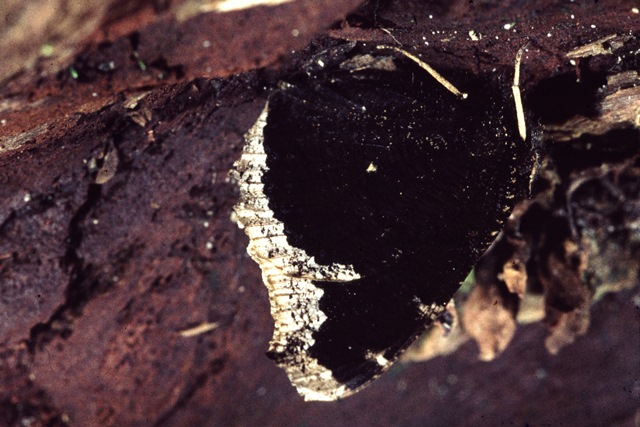
Photographs: Frits Bink ©.
Behaviour in space
From stay-at-home to migrant: migrant, overwinters on quite different sites from where it reproduces and migrates sometimes over very long distances.
Trace the mate: male patrols in spring.
Orientation in the landscape: copses in open landscape and river courses.
Oviposition: one single clutch of about 270 eggs which is attached to a twig of the host-plant as a cuff.
Defence
Threats from other organisms: larva is armoured by long and sharp spines and protected by warning colours.
Threats from the environment: uniformity of the landscape.
Feeding habits
Adult: in summer liquid of wounded trees, rotten material, in spring nectar of flowering willows.
Larva: young larvae live in a solid nest, the larger ones are also gregarious and moved together to new branches of the shrub or tree.
Larval foodplants
Plant species: Betulaceae, Betula pendula, Salicaceae Populus tremula, Salix alba, S. aurita, S. caprea, S. cinerea.
Journal
Rearing experiment based on specimens from Borg, Öland, Sweden:
10 July 1982: larvae in fourth instar collected from communal web (empty egg batch contained 293 eggs, of which only 2 unhatched).
15 July: larvae in last instar.
23 July: larvae ready to pupate.
3 August: adults appeared.
Overwintered outdoors.
18 March 1983: taken indoors.
20 March: two butterflies were active.
3 April: four butterflies fed three times with sugar solution.
7 April: butterflies fed with female willow catkins, seemed to be very effective.
18 April: fed with honey mixture and willow catkins.
3 May: butterflies placed outdoors in large cage.
14 May: two butterflies were close together and looked as if they had mated.
23 May: female butterfly sat on stem of the willow bush.
2 June: female dead.
Table 99-1. Results of dissections

Table 99-2. Collection and observation localities
EST, Mannikjärv, 58° 52’07”N – 26° 15’ 37”E; 15 July 1999.
F, la Garde Freinet, 100 m, 43° 19’N – 6° 30’E; 25 April 1997.
S, Öland, Borg, 56° 40’ 04”N – 16° 36’ 05”E; 10 July 1982 (larvae).
S, Öland, Böda, 57° 15’ 00”N – 17° 03’ 57”E; 21 August 1983 (butterflies on the beach, drinking from rotten seaweed).
Fig. 99-1. Nymphalis antiopa, phenogram adapted from Bos et al. 2006: 275.
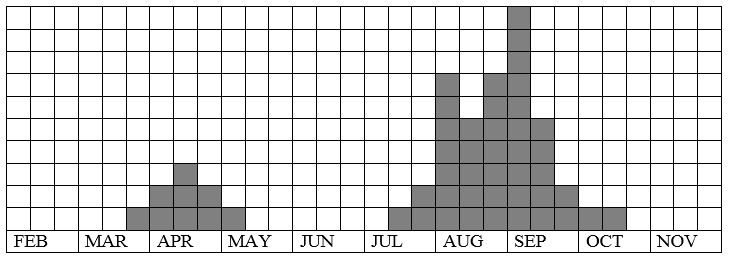
Fig. 99-2. Nymphalis antiopa, habitat characteristics.
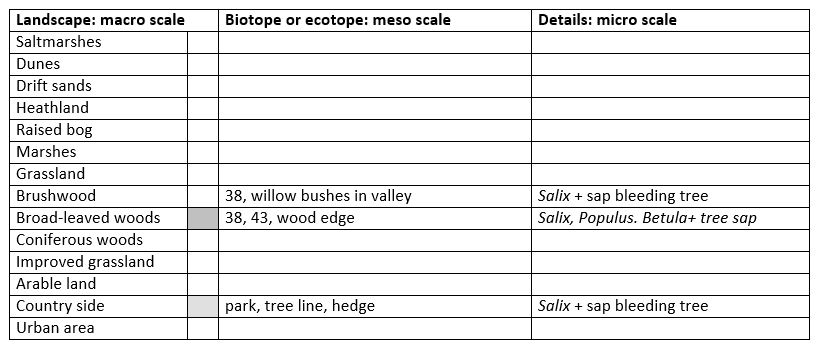
Fig. 99-3. Nymphalis antiopa, climate matrix, heat-sums 400 - 2000°d.
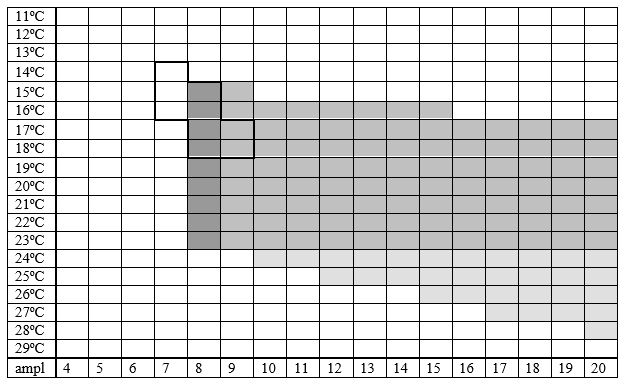
|










